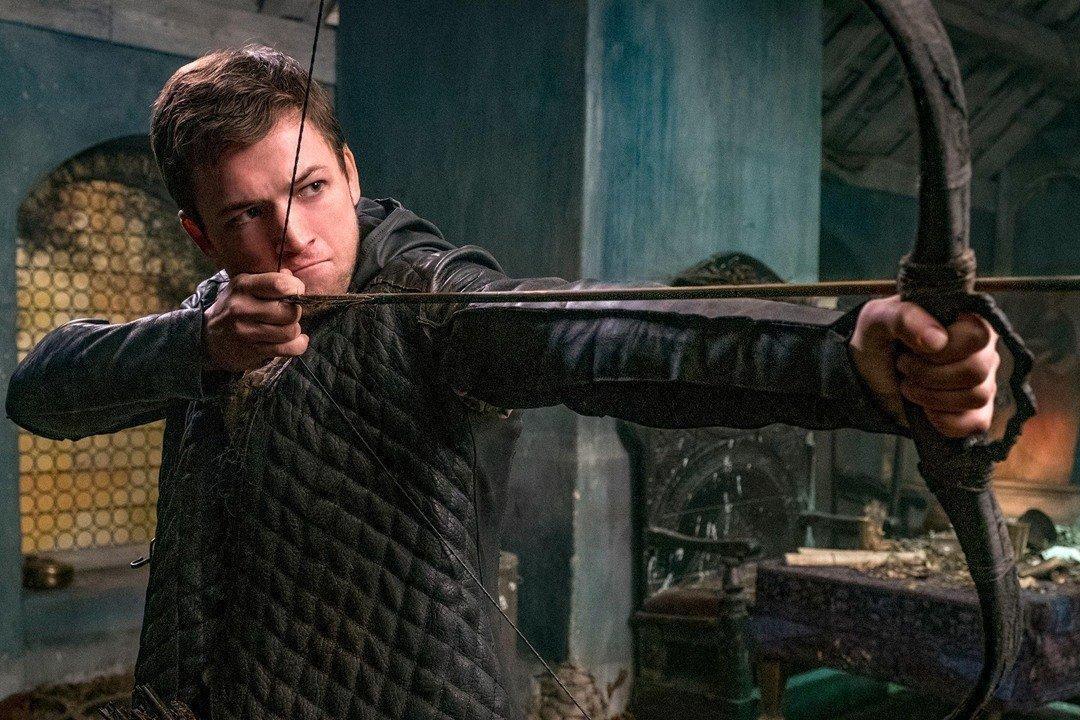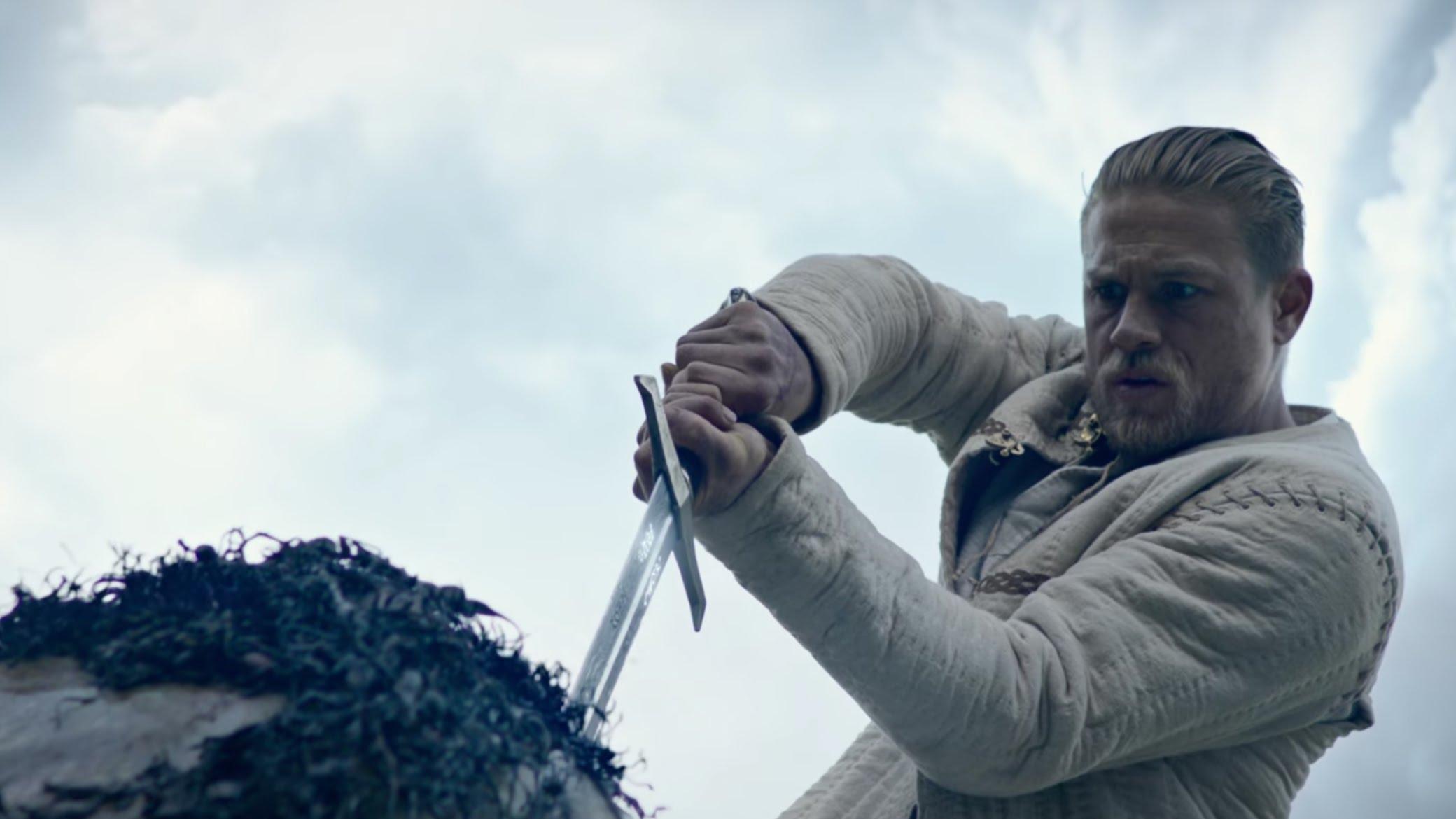Robin Hood: Why do we keep turning our folk heroes into superheroes?
Robin Hood is not the first folk hero to be given a super-powered makeover onscreen. In last year’s ‘King Arthur: Legend of the Sword’, whoever was worthy to wield Excalibur was also blessed with its magical abilities, says Clarisse Loughrey


Your support helps us to tell the story
From reproductive rights to climate change to Big Tech, The Independent is on the ground when the story is developing. Whether it's investigating the financials of Elon Musk's pro-Trump PAC or producing our latest documentary, 'The A Word', which shines a light on the American women fighting for reproductive rights, we know how important it is to parse out the facts from the messaging.
At such a critical moment in US history, we need reporters on the ground. Your donation allows us to keep sending journalists to speak to both sides of the story.
The Independent is trusted by Americans across the entire political spectrum. And unlike many other quality news outlets, we choose not to lock Americans out of our reporting and analysis with paywalls. We believe quality journalism should be available to everyone, paid for by those who can afford it.
Your support makes all the difference.Robin Hood, the masked avenger, glides through the air in slow motion. In the space of a single, high-flying leap, he unsheathes a pair of arrows and lets his bow direct them straight into the hearts of his enemies. With Kingsman’s Taron Egerton in the lead for his latest self-titled cinematic adventure, this Robin Hood can do it all. A master of both archery and martial arts, he’s a preternaturally powerful figure who uses that power to enact a justice that exists outside of the law, here leading a revolt against the corrupt English crown. In short, he’s a superhero. There’s no doubt about it.
And he’s not the first folk hero to be given a super-powered makeover onscreen. In last year’s King Arthur: Legend of the Sword, whoever was worthy to wield Excalibur was also blessed with its magical abilities, not unlike those of Mjolnir, Thor’s hammer from the Marvel universe.
The age of the folk hero has long ended. Now that every deed can be photographed, caught on film, or streamed directly on the internet, we’ve been robbed of the ability to mythologise our heroes, or even to craft them anew out of half-truths and plausibilities. Superheroes are now the ones that have become symbolic of our values, in a way that folk heroes once were. And, in turn, those folk heroes we already know have now become superheroes. It’s an inevitable process.
That said, superheroes themselves have drawn heavily on the established structure of folklore. The stories, from the Lone Ranger to Spider-Man, often start the same: fate strikes an ordinary person who, following a series of life-changing events, takes up the mantle of hero. If they are of extraordinary birth, they must often pass a series of tests to prove their worthiness. They exist as defenders of the “goodness” of mankind: love, righteousness, and peace.
Superheroes, like folk heroes, are constructed out of a multitude of often contradicting stories, woven together by different creators. Comic books are constantly in a cycle of rewriting the origins of their heroes, while drastically changing their fates on a dime. Indeed, their identities are so closely aligned that folk heroes have often cropped up in the middle of comic book universes: Robin Hood was briefly the identity of Hawkeye, when he was sent back to the 12th century with his memories drained, and provided a clear inspiration for DC’s Green Arrow. Marvel’s Knights of Pendragon, meanwhile, are a team of British superheroes, each possessed by one of the spirits of the Knights of the Round Table.
So it’s easy (and tempting) for Hollywood to cast folk heroes as superheroes, since so much of the groundwork is already there. Although Robin Hood’s mission to rob the rich and give to the poor is a relatively late addition to his story – he may have been an established figure by the 1370s, but the first evidence of those actions arrive in 1592 – the idea clearly stuck. Ever since Howard Pyle wrote The Merry Adventures of Robin Hood in 1883, an extremely influential version of the story written for children, Robin Hood has been solidified as a do-gooder vigilante. It was Sir Walter Scott’s Ivanhoe (1819), meanwhile, that formalised into canon Robin Hood’s ability to fire an arrow straight through his opponent’s, splitting it down the middle.
Robin Hood may even have served as a kind alias for criminals since variations on the name feature in Medieval court records. And so, it could be that Robin Hood’s name became a kind of mantle to be taken up by those who deemed themselves worthy (if that can be said of petty thieves and outlaws), just as the title of Captain America has been passed between several different superheroes, from Steve Rogers to The Falcon.
Hollywood, bizarrely, has largely stripped him of his symbolic status and focused on painting him as a plausible historical figure: The Adventures of Robin Hood (1938), starring Errol Flynn, depicted him as a Saxon knight fighting against Norman oppressors; Robin and Marian (1976), with Sean Connery, showed him as an ageing crusader; while in Robin Hood (2010), with Russell Crowe, he managed to prevent a French invasion. This year’s latest version, then, is a rare example of cinema embracing his status as pure folklore.
As could be said for King Arthur. The version of the myth we’re most accustomed to, thanks to the 1967 movie musical Camelot, draws on what’s called Arthurian romanticism, a French version of the legend that introduces the love triangle between Arthur, Guinevere, and Lancelot. More recently, there’s been a similar trend of trying to place King Arthur in a historical context: both King Arthur (2004) and The Last Legion (2007) placed him at the fall of the Western Roman Empire.

Watch Apple TV+ free for 7 days
New subscribers only. £8.99/mo. after free trial. Plan auto-renews until cancelled

Watch Apple TV+ free for 7 days
New subscribers only. £8.99/mo. after free trial. Plan auto-renews until cancelled

In its superhero-ising of the character, King Arthur: Legend of the Sword in fact looks back to one of the earliest iterations of the figure. Before Geoffrey of Monmouth consolidated the more fantasy-orientated version we know today (from Merlin to Excalibur) in the 12th century Historia Regum Britanniae, Welsh and Breton sources portrayed Arthur as a superhuman warrior who fought off giant cat-monsters, boars, witches, dragons, and giants. Another tradition even teamed him up with a whole band of heroes.
One of China’s greatest folk heroes will receive the Hollywood treatment once more, when Disney draws from its 1998 animated film Mulan for a live-action remake, set for release in 2020. It’s a film which already fitted superhero characteristics onto the story of Hua Mulan. Although the original hero (from the Ballad of Mulan) disguised herself as a man and fought bravely in the army for 12 years, Disney’s Mulan is responsible for almost single handedly saving all of China. The live-action version may pit Mulan, played by Liu Yifei, against a powerful witch, played by Gong Li, but it’s unclear whether Mulan herself will be endowed with any supernatural powers.
Whatever happens, the trend is here to stay. The folk hero has hitched its hopes of survival on its modern evolution, for better or worse.
Robin Hood is out in UK cinemas now
Join our commenting forum
Join thought-provoking conversations, follow other Independent readers and see their replies
Comments